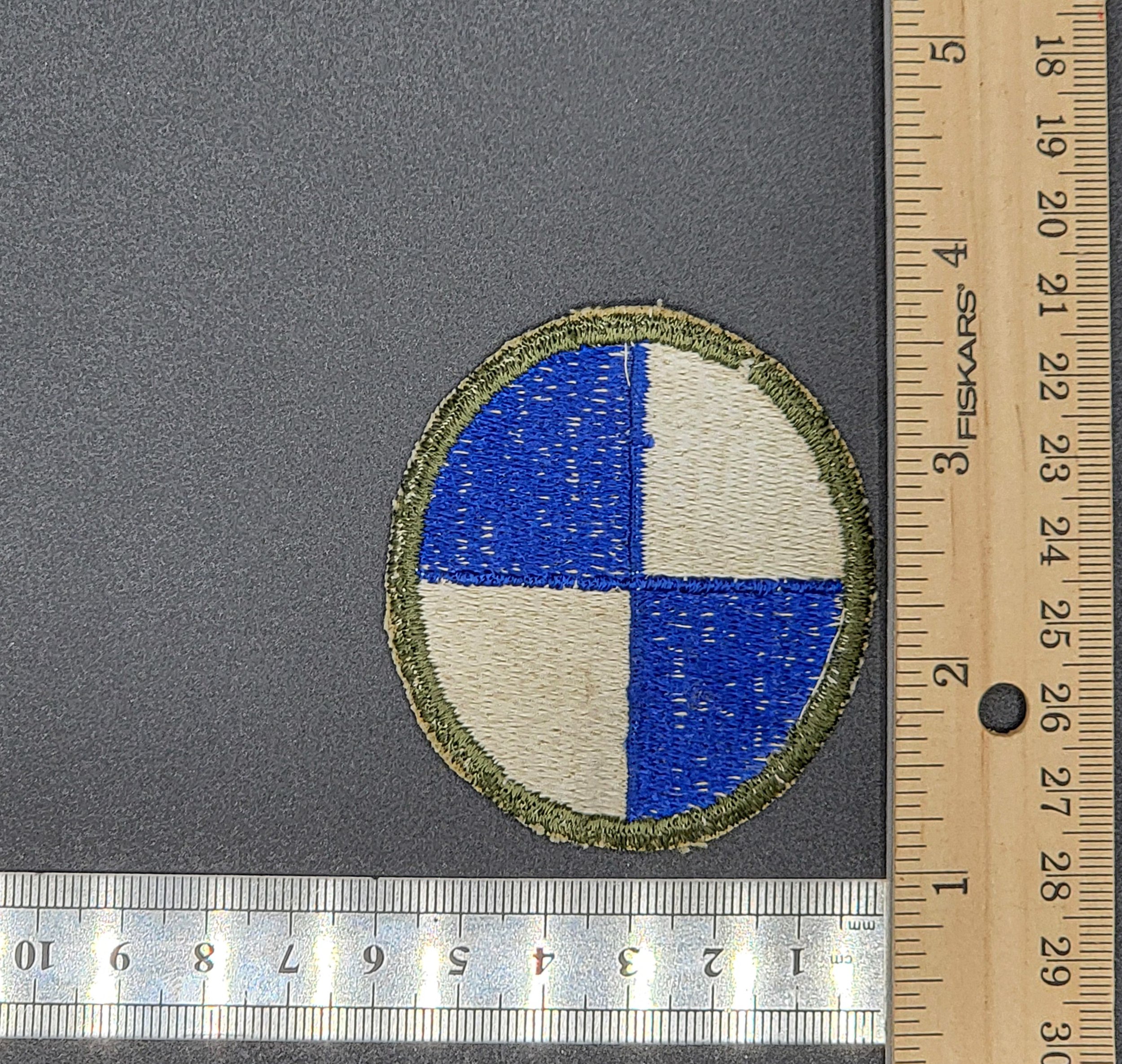IV Corps
Continuing the lineage of the World War I IV Corps, a second IV Corps was constituted in the Regular Army and activated on 27 June 1944 in Italy, being consolidated with the second, active, IV Corps that had been formed in 1922.[3] IV Corps replaced the VI Corps in the U.S. Fifth Army's order of battle in the Italian campaign, after Allied forces liberated Rome in the summer of 1944 and VI Corps was subsequently withdrawn from Italy to take part in Operation Dragoon, the Allied invasion of southern France. Initially the corps had two divisions—the U.S. 1st and South African 6th Armoured Divisions—but was reinforced with the U.S. 92nd Infantry Division from August, the 1st Brazilian Infantry Division from September, and the U.S. 10th Mountain Division in February 1945, as well as the U.S. 85th Infantry Division in April
Under command of Major General Willis D. Crittenberger, the IV Corps took part in the fighting through the summer of 1944 as the Fifth Army, under the command of Lieutenant General Mark W. Clark, and the British Eighth Army, commanded by Lieutenant General Sir Oliver W. H. Leese, advanced north to the River Arno. In the autumn and winter of 1944, the IV Corps formed the central wing of the Fifth Army's sector, taking the major role in the Fifth Army's assault on the Gothic Line in the central Apennine Mountains, fighting to break through to the Lombardy plains beyond.
Continuing the lineage of the World War I IV Corps, a second IV Corps was constituted in the Regular Army and activated on 27 June 1944 in Italy, being consolidated with the second, active, IV Corps that had been formed in 1922.[3] IV Corps replaced the VI Corps in the U.S. Fifth Army's order of battle in the Italian campaign, after Allied forces liberated Rome in the summer of 1944 and VI Corps was subsequently withdrawn from Italy to take part in Operation Dragoon, the Allied invasion of southern France. Initially the corps had two divisions—the U.S. 1st and South African 6th Armoured Divisions—but was reinforced with the U.S. 92nd Infantry Division from August, the 1st Brazilian Infantry Division from September, and the U.S. 10th Mountain Division in February 1945, as well as the U.S. 85th Infantry Division in April
Under command of Major General Willis D. Crittenberger, the IV Corps took part in the fighting through the summer of 1944 as the Fifth Army, under the command of Lieutenant General Mark W. Clark, and the British Eighth Army, commanded by Lieutenant General Sir Oliver W. H. Leese, advanced north to the River Arno. In the autumn and winter of 1944, the IV Corps formed the central wing of the Fifth Army's sector, taking the major role in the Fifth Army's assault on the Gothic Line in the central Apennine Mountains, fighting to break through to the Lombardy plains beyond.
Continuing the lineage of the World War I IV Corps, a second IV Corps was constituted in the Regular Army and activated on 27 June 1944 in Italy, being consolidated with the second, active, IV Corps that had been formed in 1922.[3] IV Corps replaced the VI Corps in the U.S. Fifth Army's order of battle in the Italian campaign, after Allied forces liberated Rome in the summer of 1944 and VI Corps was subsequently withdrawn from Italy to take part in Operation Dragoon, the Allied invasion of southern France. Initially the corps had two divisions—the U.S. 1st and South African 6th Armoured Divisions—but was reinforced with the U.S. 92nd Infantry Division from August, the 1st Brazilian Infantry Division from September, and the U.S. 10th Mountain Division in February 1945, as well as the U.S. 85th Infantry Division in April
Under command of Major General Willis D. Crittenberger, the IV Corps took part in the fighting through the summer of 1944 as the Fifth Army, under the command of Lieutenant General Mark W. Clark, and the British Eighth Army, commanded by Lieutenant General Sir Oliver W. H. Leese, advanced north to the River Arno. In the autumn and winter of 1944, the IV Corps formed the central wing of the Fifth Army's sector, taking the major role in the Fifth Army's assault on the Gothic Line in the central Apennine Mountains, fighting to break through to the Lombardy plains beyond.

